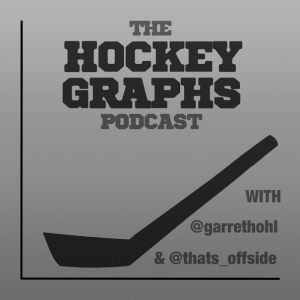
I’ve been asked by a couple of people how a team with a normal PDO and strong metrics could have missed the playoffs entirely. It’s an important question to address, particularly because the playoffs are so much more important than worrying about whether you’re lucky enough to win the Stanley Cup. I composed an email response, and felt good enough about it to open it up. While this doesn’t comprise the whole of the explanation (certainly, there’s some “blame” that goes to Calgary & Winnipeg), they’re points that I’m not seeing made elsewhere.
Hi XXXXX,
A couple of things really hurt the Kings. One is a cruel fact of a low-scoring league: if more games are going to be decided by one or two goals, it increases the likelihood that a fluky goal can impact a team in the standings. The Kings had the most overtime losses in the Western Conference; last year they were tied for the second least in the West. The second thing is the tank battle…the West had two teams with historically bad records – add in games against Buffalo, and we have three teams that will end the season with point totals that were typically reserved for the sole worst team in the league in other seasons. On the flip side, that creates a rising tide for all the other ships in the league, and raises the bar for getting into the playoffs. I mean, needing to get nearly 100 points to get in? Last year, the bottom team in the West, Dallas, had 91 points. A nearly identical record to this year got Los Angeles into the playoffs in the 8th seed in 2011-12.
Maybe the closest comparable circumstance was 2010-11, when the West again had two sad-sack teams (Colorado, Edmonton), and the East was noticeably weaker than the West. It took Chicago 97 points to get in. Also, look at 2006-07…Colorado didn’t make it with 95 points, having gone 44-31-7 during the season. If the West is considerably stronger than the East, as it was back then, you could also end up with a tougher path to making the playoffs. In ’06-07, every team in the Western Conference, save the 8th seed (Calgary, with 96 points), had 104 points or more!
Anyway, this year’s league created a scenario where a good team, by any measure, might not get in. The Kings went 39-27-15, outscored their opponents by 12 goals (in fact, they tied for 2nd in the league in goal differential at even strength), and could get 95 points and not make the playoffs. In the loser point era, there were only two seasons that was even possible, and both occurred in the stronger Western Conference. It’s a successful season by anything except the fluid marker of the playoffs, which unfortunately for them is all-important to reach.
Hope this helps,
Best,
Ben
Note: One critique I’d like to address – yes, all teams in the league are theoretically dealing with the tank battle, but tanking doesn’t occur across the entire season, which means that teams that have already played most or all of their games against tanking teams earlier in the year won’t have the benefit. Additionally, those same teams might have the resulting, added pressure of a more-difficult set of opponents through the latter portion of the season. If the difference between making the playoffs versus not is a matter of a few points, the difference in scheduling can become all the difference in the world.











